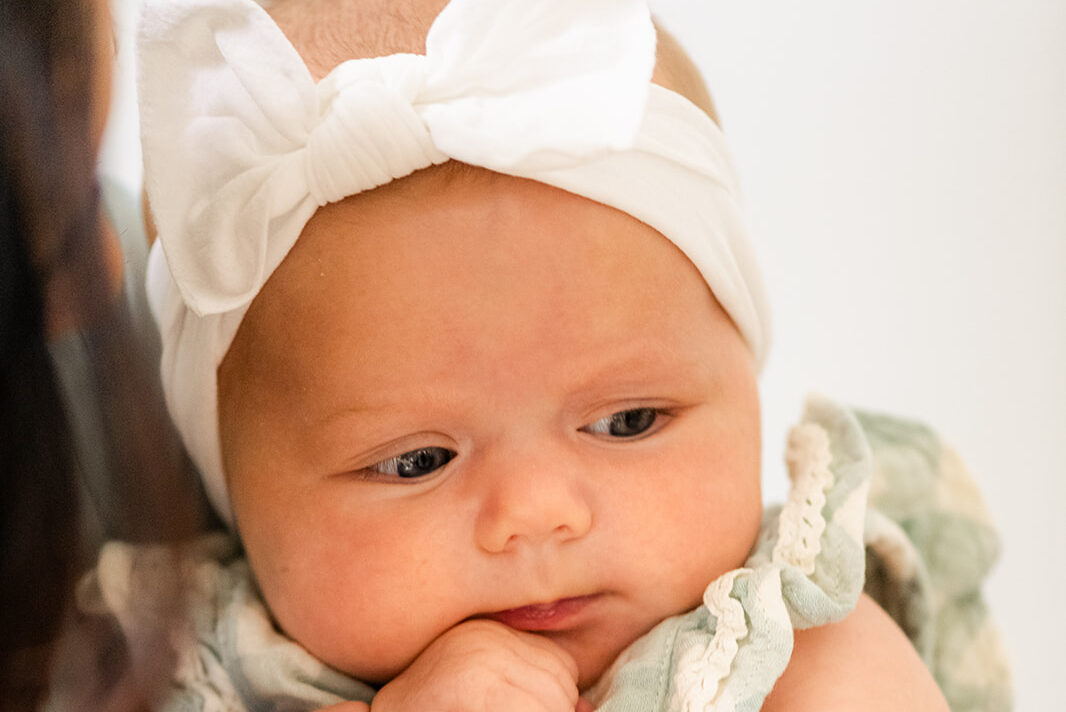As parents, one of the most valuable gifts we can give our family is the gift of good sleep. Not only does it help with physical growth and mental development, but it also fosters a sense of well-being and harmony in the home. One effective way to encourage healthy sleep habits from the beginning is by implementing the Eat-Play-Sleep routine. This simple but powerful approach can be a game-changer for families with new babies. In this blog I will discuss exactly how to Eat-Play-Sleep.
How Does Eat-Play-Sleep Work?
- Eat: Your child starts their cycle by feeding. This ensures they don’t always rely on eating to go to sleep, which is important for all babies but especially those who have reflux.
- Play: Next comes active playtime. This is their opportunity to engage with the world around them, learn, and use up energy. There won’t be a lot of obvious “play” for newborns but things like listening to your voice, watching your facial expressions and kicking their legs happen during their awake time.
- Sleep: Finally, it’s time for sleep.
How to Implement Eat-Play-Sleep
- Mindful Feeding: Whether you’re breastfeeding or bottle-feeding, ensure your child is getting a full feeding each time they eat.
- Engaging Play: Use the playtime to really engage your child’s senses and developmental skills. This doesn’t need to be overly structured; even simple activities like talking, singing, or playing with a rattle can be beneficial.
- Watch for Sleep Cues: Learn to recognize your child’s signs of sleepiness—rubbing eyes, yawning, looking away—and start winding down. Introduce calming activities like reading a book or a cuddling.
Why Eat-Play-Sleep?
Eat-Play-Sleep structures the day in a way that gives babies the security of knowing what comes next, which is comforting and stabilizing. For parents, having a predictable routine for eating, playing, and sleeping can help organize the day and make time management easier. By teaching your child to fall asleep without eating, you’re also setting the stage for less night wakings. This means better rest, improved mood, and more enjoyable family time.
How to do Eat-Play-Sleep with Short Naps
If your baby consistently takes short naps, you may need to offer more frequent naps throughout the day. If you feed your baby after every nap, that may be too many feedings for what your baby wants/needs. So your routine may not include a feeding between every nap. Sometimes it may be time for a feeding and also time to go to sleep. It’s not going to work out perfectly every day. The important thing is that you are trying not to feed to sleep every single time.
When Does Eat-Play-Sleep Stop?
I guess you could say that Eat-Play-Sleep never stops. If you think about it, even adults follow a routine of eating, being awake and sleeping. Pretty much all of us go to sleep without eating directly before. However, Eat-Play-Sleep is most commonly referred to in infancy, between 0-5 months. Infants typically feed every 2-3 hours, so the routine naturally revolves around these feeding times. Around 6 months, babies start to transition to solid foods in addition to breastfeeding or formula feeding. This transition may lead to adjustments in the routine, with meals becoming more integrated into the “Play” part of the day. As babies grow older, they can stay awake for longer periods between naps. This means that the “Play” portion of the routine may extend, and babies may engage in more activities during their awake time. Once a baby turns one their days are often built around when they should be sleeping, with pretty regular and consistent meal times. By this age, we typically don’t think about toddlers being on an Eat-Play-Sleep routine anymore.
Implementing the Eat-Play-Sleep routine is just the beginning! in my online course, Happy Baby Sleep School, I discuss so much more about laying a healthy sleep foundation. With dedication and consistency, you’ll see significant improvements in your baby’s sleep patterns and overall happiness, fostering a more harmonious home environment for everyone!

